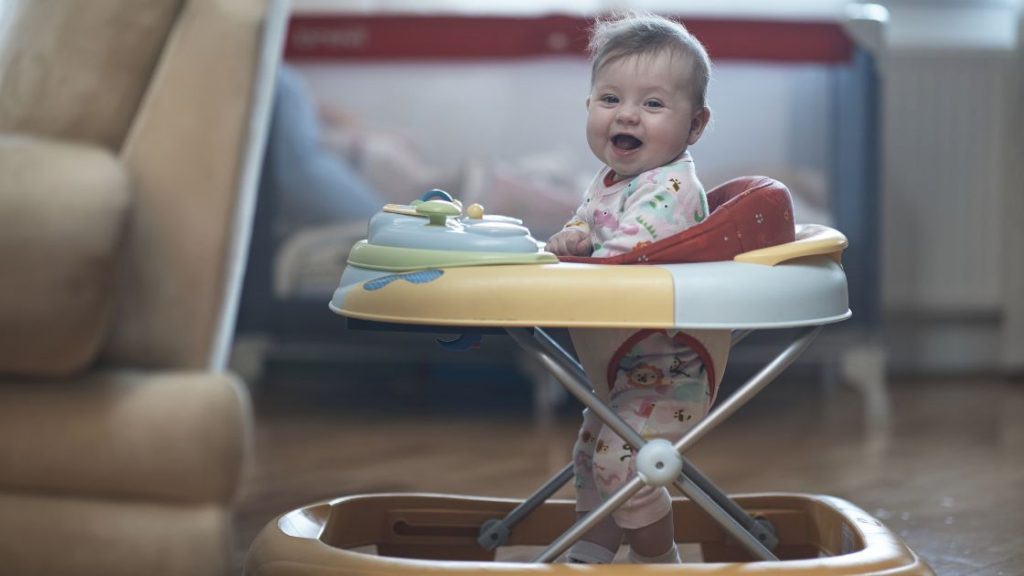The walker is always a tool to support the baby to keep balance to easily move and not to fall. With the help of a walker, your baby will learn to walk faster and more firmly.
However, many parents are afraid that baby walkers will cause bow legs for children. Is a baby walker really good for children and makes them learn to walk earlier than other children? Do baby walkers cause bow legs for children?
This article will provide parents with information about walkers, the effects of walkers on children so that parents can consider whether to let their children use a walker or not.
Do Baby Walkers Cause Bow Legs?
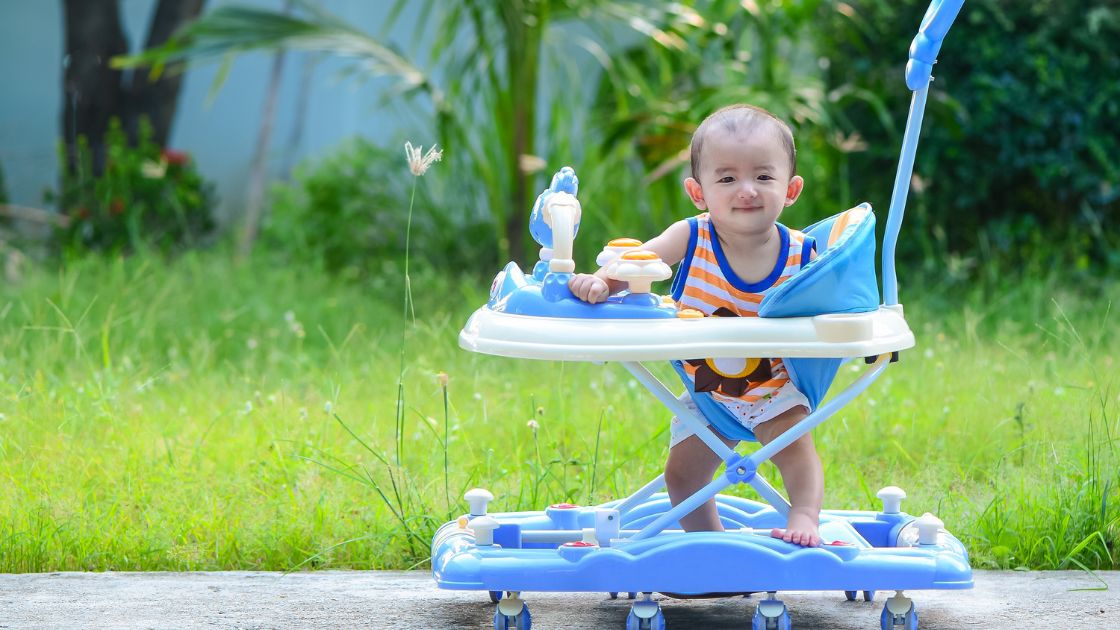
Bowel leg is a condition in which the legs are bent, which means that the knees are far apart even when the ankles are close together. Bowel legs are also known as congenital genu varum.
Bowel legs appear a lot in babies because the legs are bent when the space in the womb is too tight. Usually, babies with bow ties do not need treatment. Babies' legs start to straighten when they're toddlers, usually between 12 and 18 months old.
Do baby walkers cause bow legs is a question parents always ask. The answer is that the walker can cause bow legs in children if parents use it in the wrong way and at the wrong time. If parents know how to use it properly, the walker will bring good results, helping the baby learn to walk safely.
Baby walkers can cause some negative effects for children such as accidents when learning to walk, babies being dependent on walkers too much. Therefore, parents need to know how to use the baby walker properly.
Using Baby Walkers: Understand The Pros And Cons
First, parents need to understand the advantages and disadvantages of a walker to consider whether to teach their baby to walk with a walker or not:
PROS
CONS
When Can A Baby Use A Walker?
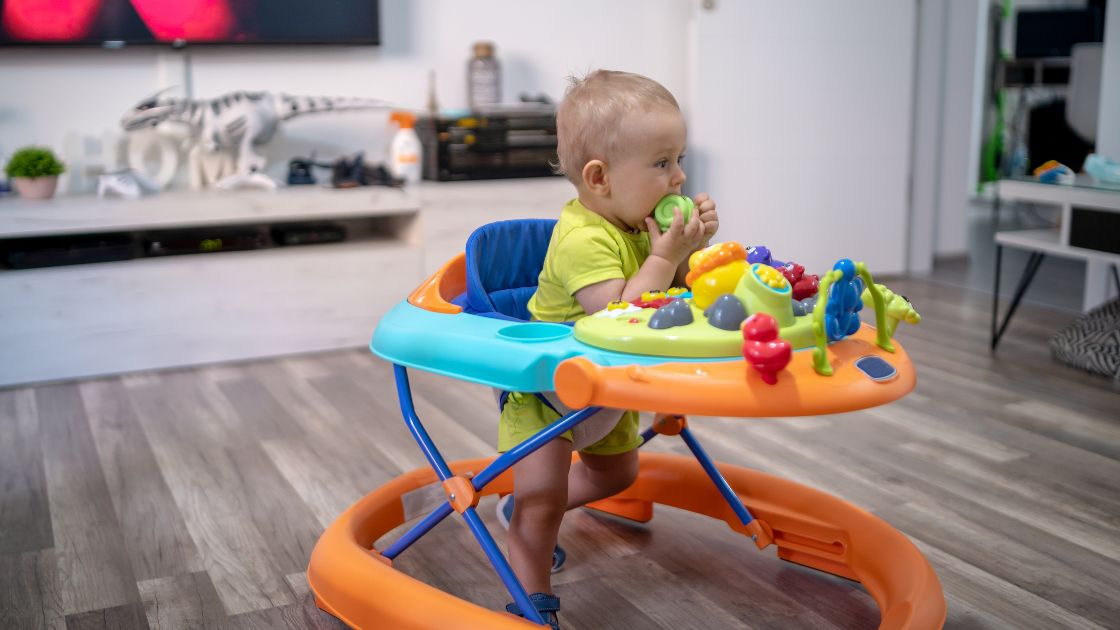
The most appropriate age for children to learn to walk with a walker is from 5-6 months old to 18 months old or older. At this time, many babies can sit and their bones are much stronger. However, parents should not force their children to sit in the car without paying attention to natural movements such as children learning to stand, crawling,....
If your child is not stable, his feet are not evenly dipped on the ground, then you should not practice the bike because this is likely to make his legs develop unevenly or affect his gait later. For children who are already strong, but if they do not want to learn to walk and do not cooperate in using the walker, do not force them, let the babies move when they want.
Notices When Choosing A Walker For Babies
There are many types of walkers with a variety of models. Therefore, to choose the right walker for your child, parents need to consider the following:
Learn about the right walkers for your baby
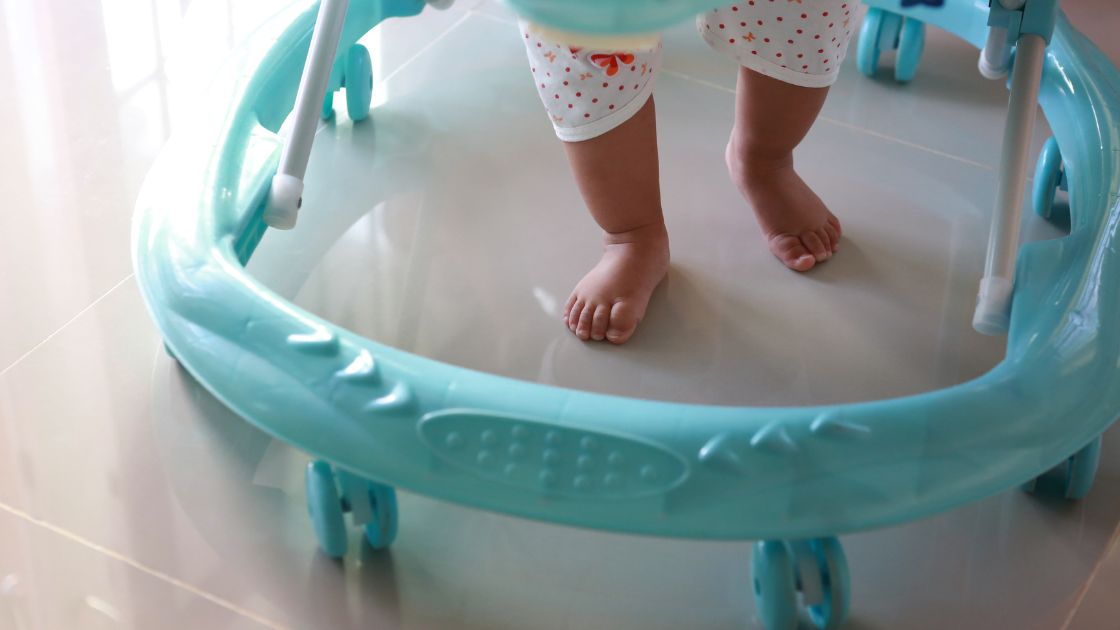
Baby walkers have many types, diverse in models, designs as well as different functions, and each type also has its own advantages and disadvantages that parents need to learn carefully before choosing for babies.
There are three types of walker as follows:
Round baby walker: A crib-like car, usually made of plastic with spinning wheels. When using, the baby will sit in the car and use his legs to push the car away.
Wooden baby walker: This type of car has an L-shaped shape and is often decorated with cute, familiar animals such as birds, ducks, etc. The car also has 4 wheels. wrapped in rubber to reduce the baby's pushing speed.
Smart walker: Usually made of synthetic plastic material, quite light and safe for babies. In addition to vivid and eye-catching colors, this car also has music and many funny toys for children. Called a smart walker because the handle of the car is designed in a circular shape with ridges, it helps the baby not to slip when using, and the car can also switch from pulling mode to pushing mode on using demand.
For babies from 8 months old, parents can choose for their child a round walker, with armrests, a walker with a seat to bring safety to the baby. As for babies aged 12-18 months, at this stage the baby can stand, so parents can buy a baby walker.
Rugged and safe design

To ensure the safety of the baby, the mother should choose a car with high certainty. The frame of the walker should be designed simply, with sturdy materials, to avoid many overlapping frames that can cause the baby to be caught when careless.
Besides, The car seat must be spacious, using a thick, soft seat cushion for direct contact and support for the entire upper body of the baby, giving the baby a sense of security when moving.
Mothers should avoid choosing cars that are too high, causing the baby to stumble and become unstable. Besides, the wheel must be designed with good adhesion, anti-slip, and easy friction. The situation of rolling over or driving away by itself will never happen.
Criteria to evaluate the type of safe walker:
The included accessories
To avoid boredom for babies, some walkers now have fun toys with bright colors. In addition to physical development from taking steps to conquer the world, babies also have the opportunity to develop their senses when holding and holding toys.
Don't forget to put your baby's favorite toys in the car. Avoid placing toys that are too high, which can make your baby's vision impaired.
Some other general notes
When choosing to buy a baby walker, you should pay attention to a few issues as follows:
Safety instructions for babies using a walker
When teach baby to walk with a walker, mothers should note the following:
Follow up often
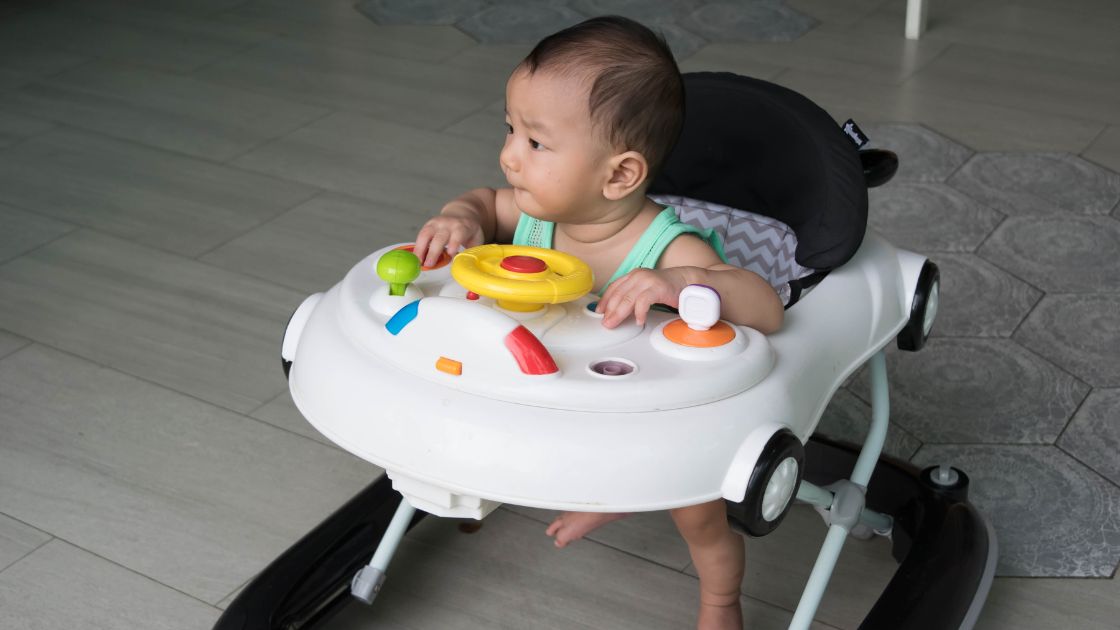
The baby's use of the walker is completely independent. However, the mother should monitor the baby carefully to see if the baby's expression, progress or if the baby is comfortable. In addition, the mother should monitor when the baby learns to walk with the car to avoid the baby going too fast or promptly handling the accident.
Limit your baby's path
To prevent dangers around your baby, design a room with a door bar around it to circle the area where the baby will walk. Avoid letting your baby walk freely and be curious with dangerous objects such as stairs, swimming pools, washing machines, etc.
There are many cases of children falling down the stairs causing injury or hitting objects that are dangerous to the baby. Therefore, to be safest, you should let your baby learn to walk in open spaces, with little furniture, etc. If you let your baby learn to walk indoors, limit your baby's access to the kitchen and toilet.
Using with reasonable time
Another equally important note is the time for the baby to use the walker. With the main purpose of using it for babies to learn to walk, mothers should not let them sit for too long just for convenience. If the walker is abused, the baby may be delayed in development compared to the natural method of learning to walk, or depending on the car and wheel movement, so he is born lazy.
Besides, long-term use can cause back fatigue for the baby and bow legs, mother should also align a reasonable time for the baby to lie down and sit with you.
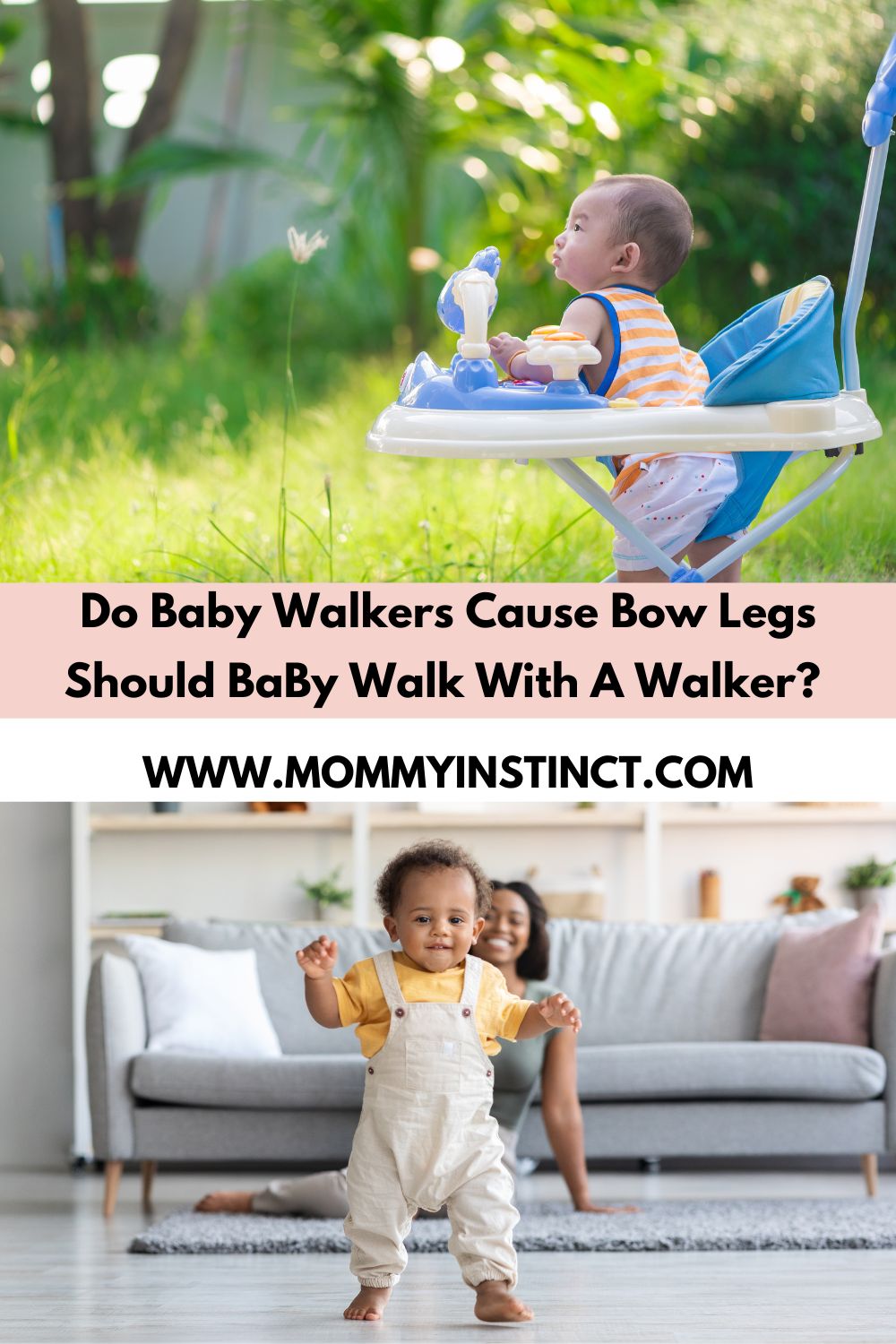
Closing
A walker will be safe and effective if parents know how to use it properly. Hopefully, this article will provide parents with information about walkers, their advantages and drawbacks, how to choose the right car and exercise for children, to help children develop comprehensively and safely!

